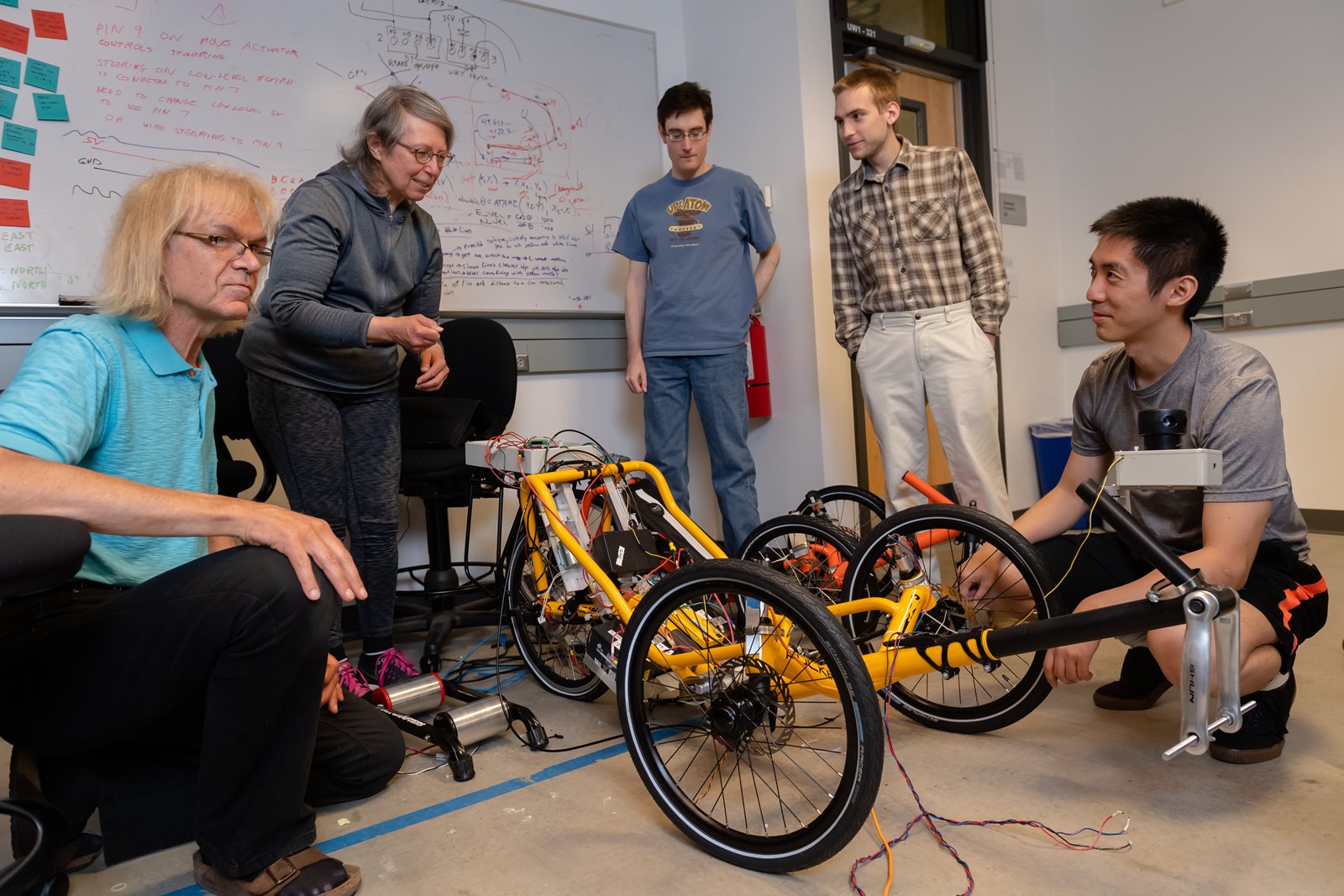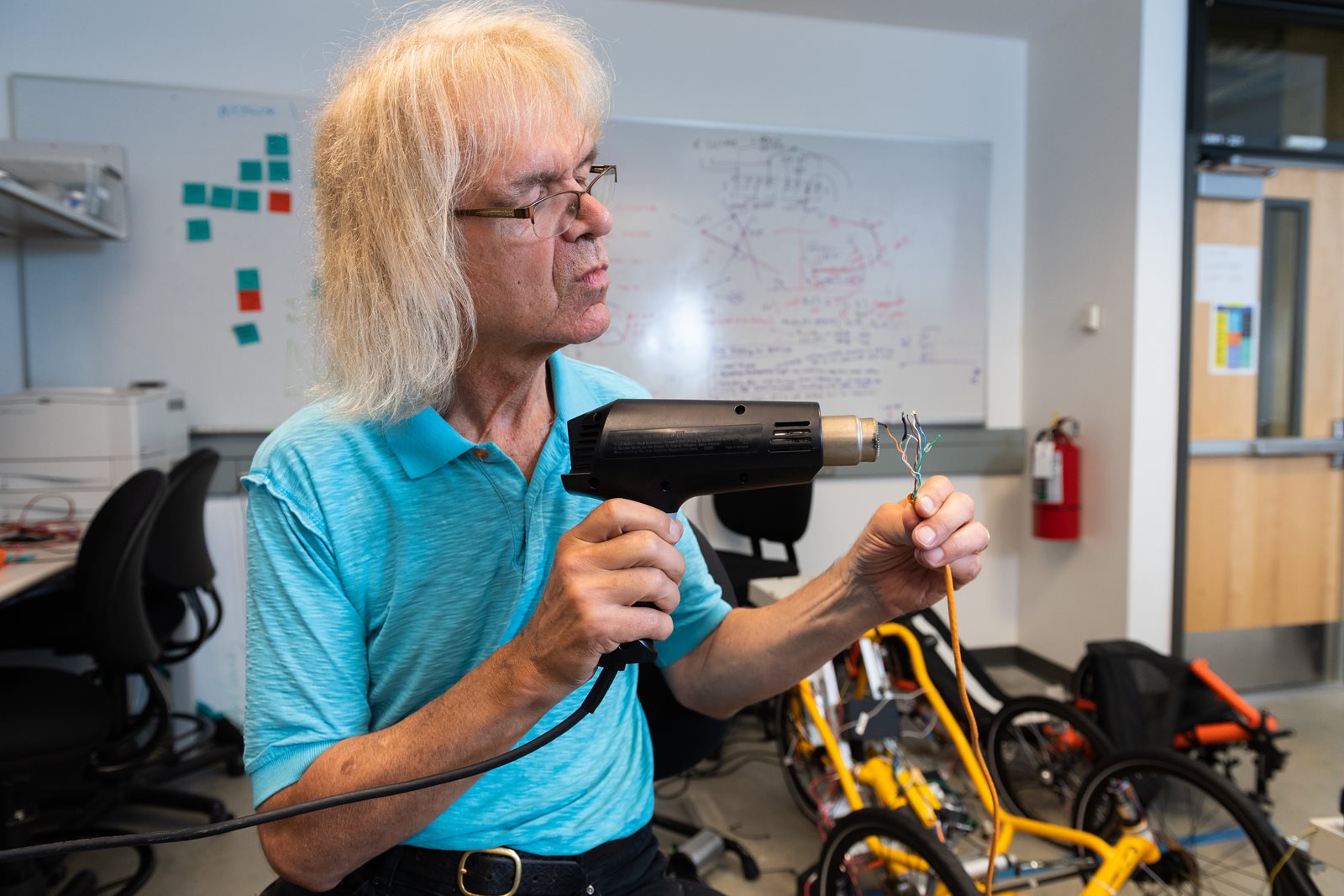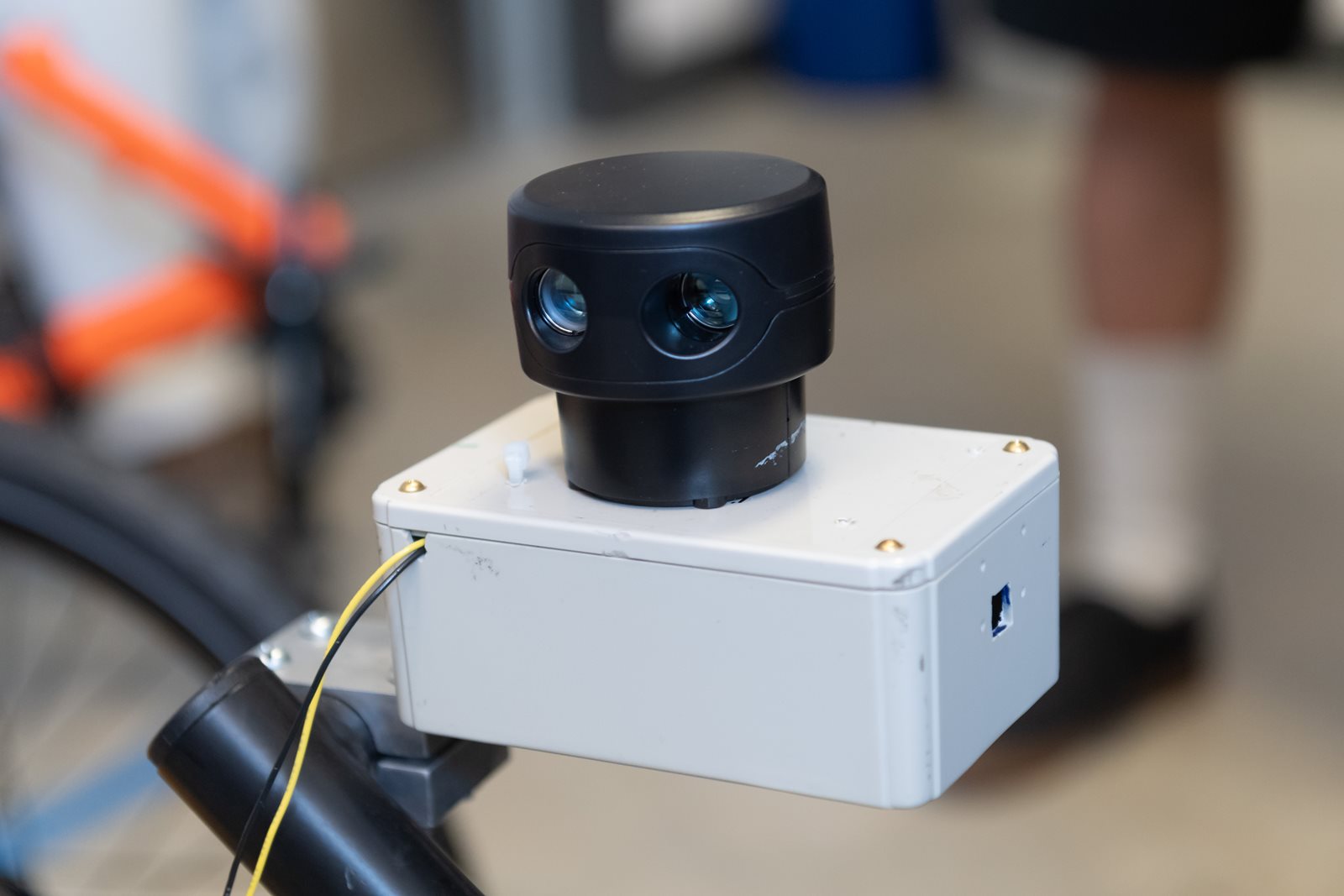
By Douglas Esser
The self-driving tricycle project at the University of Washington Bothell is rolling forward, giving students the opportunity to develop engineering and computing skills in the field of autonomous vehicles.
Tyler Folsom, an affiliate professor in Computing and Software Systems in the School of Science, Technology, Engineering & Mathematics, brought the idea with him to campus five years ago. The project picked up steam in 2016 with a $75,000 Amazon Catalyst grant. The first videos of a trike in motion were widely shared on the internet, and the idea continues to attract media attention.
Now, several components of the autonomous tricycle are in their second and third iterations, Folsom said. And there’s no end to the list of changes and improvements he and his team are making to two recumbent cycle frames, mounted with wires, gear and electronics in a UW Bothell lab. The team also is testing the technology on an egg-shaped Electric, Light and Fun (ELF) vehicle, which is kept off campus.

More than 50 students have worked on the trikes as capstone projects, independent study or as part of classes, Folsom said. In mid-August, the team in the lab included Riley Poole, a senior in Mechanical Engineering and non-student volunteers Joseph Breithaupt, Patricia Tressle and Yoshiaki Sono.
Poole has analyzed the braking system and plans to continue working on the project until graduating next winter. Breithaput has some familiarity with the hardware and software but says, “There’s a huge learning curve.” Tressel has been involved in the project since it started in Folsom’s garage. Sono is preparing to start work at Voyage, a Palo Alto company planning to deploy self-driving cars in retirement communities.
Team members have been working on the radio control, brakes, obstacle detection and software. They have also updated circuit boards with sensors, maps, speedometer, compass and GPS. It’s an ongoing process of renewal.

“Things work and break and we redo them better,” Folsom said.
Eventually, the goal is a tricycle in which a passenger would sit, enter a destination and ride to it safely and simply. Ideally, the trikes would operate on their own dedicated routes, instead of fending off other vehicles and pedestrians. “When you have to deal with drivers it becomes a whole lot more complicated,” Folsom said.
Another priority, in contrast with self-driving cars, is a low-cost, low-power vehicle. Such a vehicle would be friendlier to the planet and more accessible for people all over the world. With no connection to the internet, it would not be prone to hacking.
Compared with 1,000 pounds of batteries in an electric car, a self-driving trike needs about 20 pounds of batteries for a range of 25-30 miles, enough for most urban trips, Folsom said. Then the trike could drive itself to a station where a robot would swap out the batteries. The batteries could be recharged with wind, solar or excess hydroelectric power.
“What I’m trying to do is push automation in the direction of ultra-low energy consumption,” the equivalent of 1,000 to 2,000 miles per gallon, Folsom said.
Meanwhile, unless a major investor ramps up the work, progress continues incrementally. This gives more students a chance to work with a significant real-world problem.
“It really lets students experience the interaction of the mechanics and the electronics and the software,” Folsom said. “It’s a more realistic type engineering problem than you often have in a straightforward lab where you’ve got everything controlled.”



